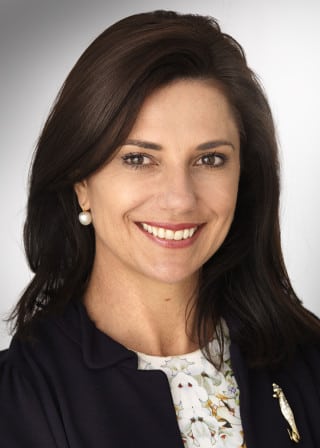Here’s one reason why you don’t see many women cashing in on big share options

Pic: Bloomberg Creative / Bloomberg Creative Photos via Getty Images
Ever wondered why you don’t see too many female directors on the shareholder registers of ASX-listed companies?
According to one high-ranking woman in the mining industry, it’s because more often than not they are appointed to boards as non-executive directors rather than executive directors.
Bronwyn Barnes, who has been inducted into the WA Women’s Hall of Fame, is an executive council member for the Association of Mining and Exploration Companies (AMEC) and sits on several boards, including ASX-listed mining companies, Perth Racing and Legend Media Group.
Barnes, who has spent about 20 years in the mining industry, is the chair of junior gold explorer Indiana Resources (ASX:IDA) and a non-executive director of MOD Resources (ASX:MOD) and Scorpion Minerals (ASX:SCN).
“I get very concerned about the lack of female participation on the shareholder registers of ASX-listed companies,” she told Stockhead.
“I really see there is a lack of equity in the wealth piece and one of my concerns is that we’re putting women onto boards, but we’re only putting them on as non-executive directors.”

Barnes said the current remuneration structure and increasing shareholder activism made it very difficult for non-executive directors to receive compensation in the form of share option performance packages.
“So what you’re essentially doing is being an employee – you get a wage, it’s a director fee,” she explained.
“Male directors going onto boards are usually in executive roles and they have access to share option performance packages. Now this is where the real wealth is created.”
Barnes believes if there is too hard a push to get women onto boards, it creates a situation where they are automatically relegated to non-executive director roles.
“They’re then not able to participate in the share-based incentive scheme and therefore they’re not equally participating in the wealth creation on a personal level,” she said.
“Some of the companies I’m executive director of and I do get share-based incentives, but so many of my female colleagues I struggle to see who has got share-based incentives.
“So if the share price goes from 10c to a buck, who’s got the opportunity to make a million bucks?”
Same skill set
Executive directors and non-executive directors essentially require the same skills.
It’s just executive directors are usually the ones directly running the company, like the managing director or director of technical services, while non-executive directors handle the strategy, governance and oversee the performance of the managing director or CEO.
“So you’re still contributing to the creation of wealth and protection of shareholder value, but you’re not being financially rewarded for it in the same way that executive directors are,” Barnes said.
To change this there is a need for a bigger pipeline of women capable of being appointed to executive director positions.
And Barnes said this was not just down to companies, but was also a task that needed to be tackled by women already in executive director roles.
It basically comes down to three things – more gender diverse networking locations, mentorship and greater visibility of potential executive director candidates.
- Subscribe to our daily newsletter
- Join our small cap Facebook group
- Follow us on Facebook or Twitter
Footy not the best place for networking
Barnes said there was an issue around networking in that it is often still “very male”.
“There is a lot of networking done in the corporate boxes at the footy,” she said.
“There’s a lot of networking done in traditional male environments, where females don’t necessarily feel comfortable or they don’t necessarily get an opportunity or an invitation to participate.
“I think a lot of the guys you’ll hear say ‘oh we’d love to put a woman on the board, but we just don’t know where to find one’.
“Well mate, you’re not going to find one at the front bar of the footy club.
“If you’re serious about appointing females to the board, go and find one because they won’t just pop up in front of you. You need to make an effort.”
Barnes pointed to AMEC’s review of the location of its networking events and its decision to go with a more gender diverse space.
“One of the first things we did is we changed the venue because we just felt that the venue that we used for many, many years was very blokey and it wasn’t a room that made women feel comfortable being in,” she said.
Not just up to the blokes
Barnes isn’t placing all the responsibility on the men though; she says she and others like her also have a role to play.
She suggests a “bring your buddy” system.
“If you’re going along to these events, take a young female with you, take somebody who you know has board aspirations and introduce them to your network,” she said.
“That’s something I’m quite strong about – referring younger women who I know have board aspirations, how can I help promote them to my network and get them connected and networked into that pool of people who are making the decisions around who gets on boards.
“If you’re not visible and you’re not making these relationships and establishing professional connections outside the board room, it makes it very difficult to be considered for those roles in the boardroom.”
UNLOCK INSIGHTS
Discover the untold stories of emerging ASX stocks.
Daily news and expert analysis, it's free to subscribe.
By proceeding, you confirm you understand that we handle personal information in accordance with our Privacy Policy.








